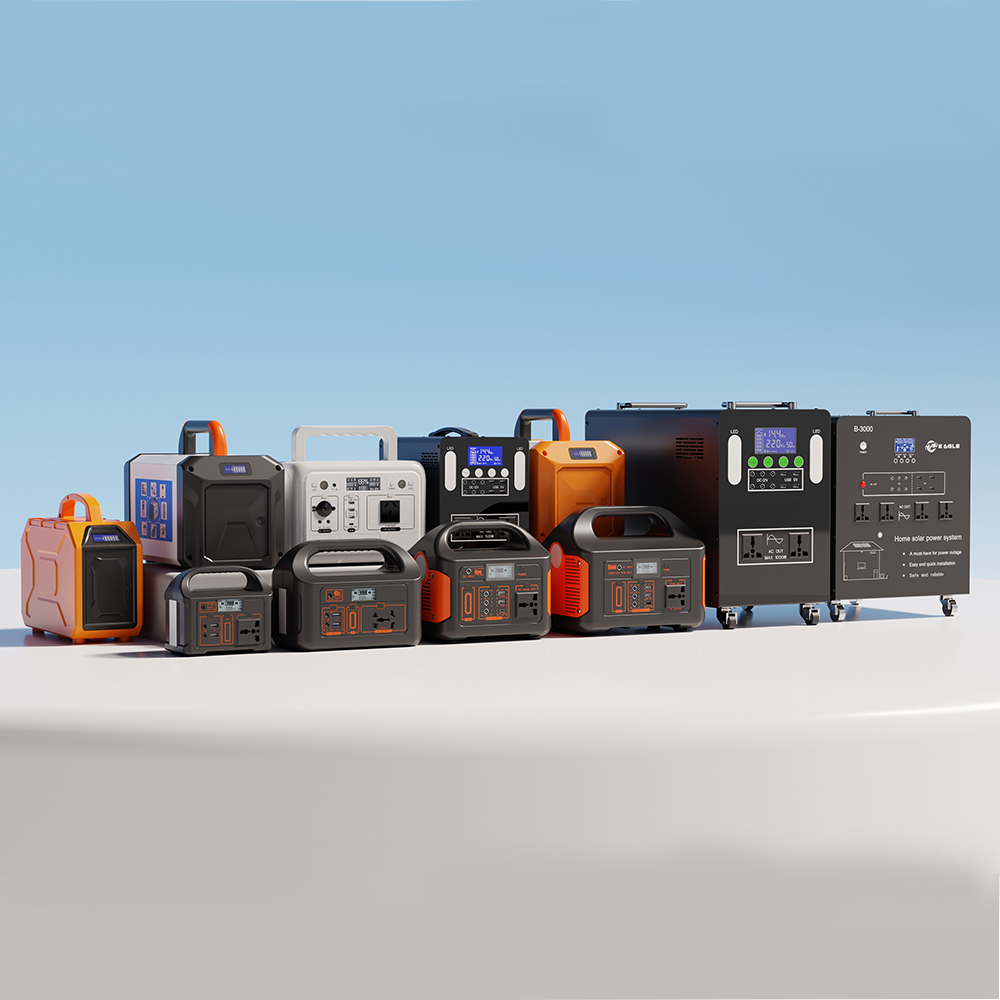Combining the advantages of portable power station, we analyze the reasons why the "energy storage + outdoor" scene in Asian, African and Latin American countries is so popular.

Portable power stations are built-in lithium-ion batteries or lead-acid batteries, which can store electrical energy and have AC output. Portable power station are light in weight, high in capacity, high in power, easy to carry, and can be used indoors or outdoors. Conventional charging or solar charging can be selected according to different usage conditions. It can provide ultra-high-power AC interfaces and is equipped with various types of DC output interfaces such as USB-A interfaces, USB-C interfaces, car charger interfaces, etc. It can not only be used as a backup power supply for electric vehicles, but also for various types of electronic products. It can be used as a small backup power supply for outdoor power supplies and emergency situations such as power outages. Portable power station is mainly used in outdoor activities and emergency electricity use, filling a gap between power banks and diesel generators.
Portable power stations have many advantages, which together make them popular in the "energy storage + outdoor" scene in Asian, African and Latin American countries. The specific reasons are as follows:
1. Backup power supply in areas with unstable power supply:
Guarantee basic electricity demand: In many countries and regions in Asia, Africa and Latin America, the power infrastructure is not perfect and power outages occur frequently. Portable power station can provide people with stable electricity during power outages, meet basic living needs such as lighting, mobile phone charging, and small household appliances, and become a reliable backup power supply.Emerging energy storage markets represented by Africa, Southeast Asia, and the Middle East all have a strong need for backup power due to unstable power grids. The inverter's on-grid and off-grid switching capabilities directly affect residents' user experience, as well as the inconvenience of electricity use in off-grid areas such as islands. The demand for energy storage is rising rapidly.
2. Meet the power demand of outdoor activities:
Enrich the outdoor activity experience: Asian, African and Latin American countries have rich natural landscapes and outdoor resources, and people are keen on outdoor activities such as camping, hiking, and fishing. In these activities, portable energy storage can charge electronic devices such as mobile phones, cameras, and GPS, allowing people to maintain communication, record beautiful moments, and navigate outdoors, enhancing the convenience and fun of outdoor activities.
Adapt to a variety of outdoor environments: Its waterproof, dustproof, and earthquake-resistant functions enable it to adapt to various complex outdoor environments. Whether in hot desert areas, humid rainforest environments, or rugged mountains, it can work stably and provide continuous power guarantee for outdoor enthusiasts.
3. Cost-effective energy solution:
Low initial investment cost: Compared with building large-scale fixed energy storage facilities or relying on traditional fuel generators, the cost of purchasing portable energy storage equipment is relatively low, which is easier for ordinary consumers and small and medium-sized enterprises in Asian, African, and Latin American countries to bear.
Flexible use and controllable cost: It can be moved and used according to actual needs, does not require complex installation and fixation, and can play a role in different scenarios. Moreover, its operation and maintenance costs are relatively low. It only needs to be charged regularly, and there is no need to purchase additional consumables such as fuel. In the long run, it has a high cost-effectiveness.
4. Environmentally friendly and in line with development trends:
Clean energy is favored: Against the background of increasing global environmental awareness, Asian, African, and Latin American countries are also paying more and more attention to environmental protection. Portable power station usually uses clean energy technologies such as lithium batteries. It does not produce pollutants and greenhouse gas emissions during use, which is in line with the concept of sustainable development and helps reduce damage to the environment.
In line with the direction of energy transformation: Some Asian, African and Latin American countries are actively promoting energy transformation and developing renewable energy. Portable power station can be used in conjunction with renewable energy equipment such as solar panels. It can be charged by solar energy during the day and the stored electricity can be used at night or on cloudy days to achieve effective use of renewable energy and promote the optimization of energy structure.
5. Significant advantages in portability and ease of use:
Easy to carry and move: Its design is lightweight and portable, and its appearance usually adopts a trolley case or a similar easy-to-carry form. Some are also equipped with rollers, which makes it easy for users to carry it outdoors. Whether it is hiking, outdoor adventures or temporary outdoor work, it can be used anytime and anywhere.
6. Technological progress promotes performance improvement:
Capacity and power upgrade: With the continuous development of technology, the battery capacity of portable power station continues to increase, and the power is gradually increasing. It can meet the power needs of more high-power equipment and support more diverse outdoor scenes, such as charging multiple electronic devices at the same time and driving small power tools.
Faster charging speed: The application of fast charging technology shortens the charging time and improves the efficiency of equipment use, allowing users to recharge portable power station in a shorter time, reduce waiting time, and better adapt to the fast-paced modern life and outdoor activities.